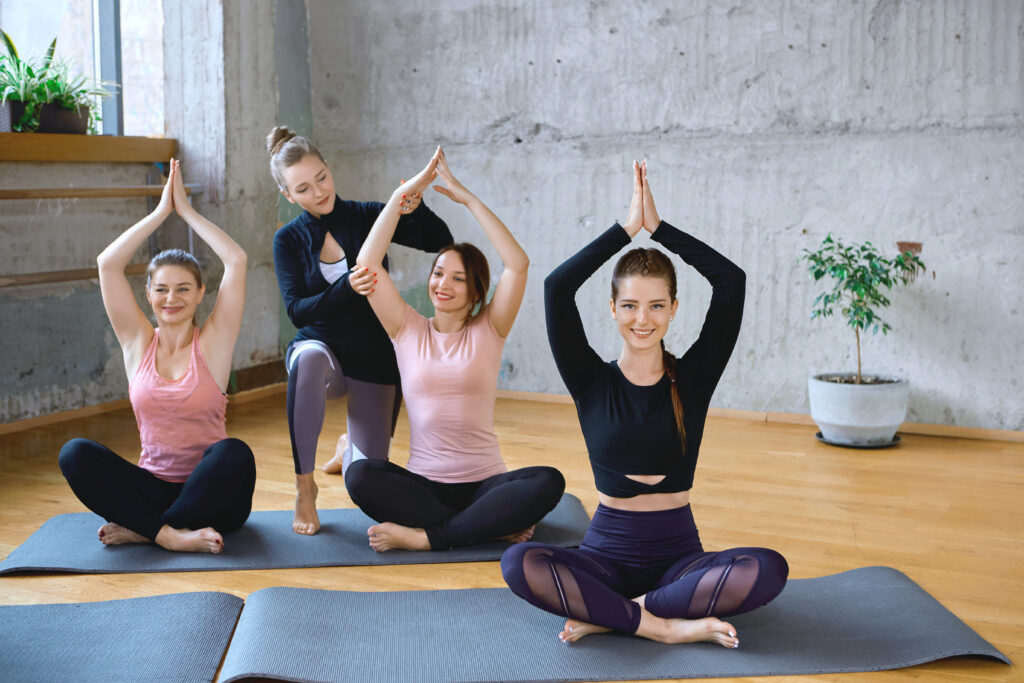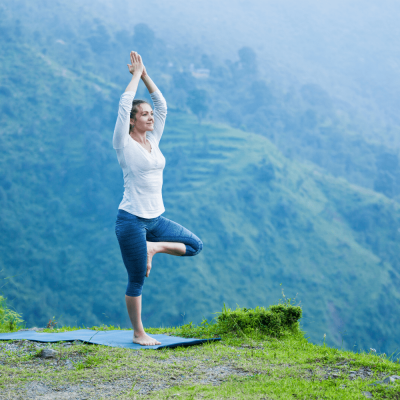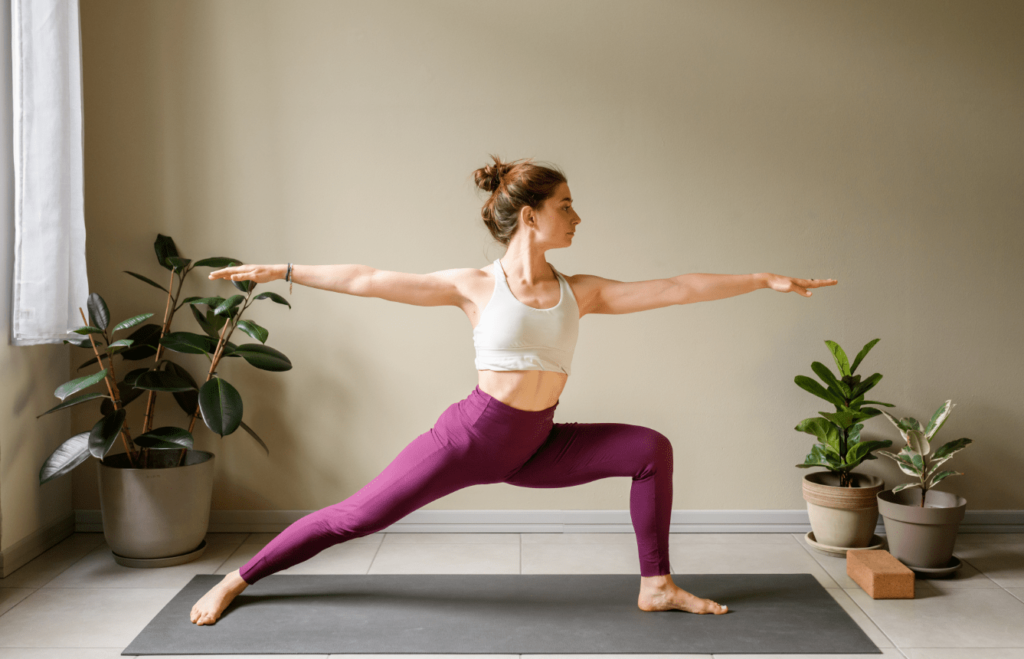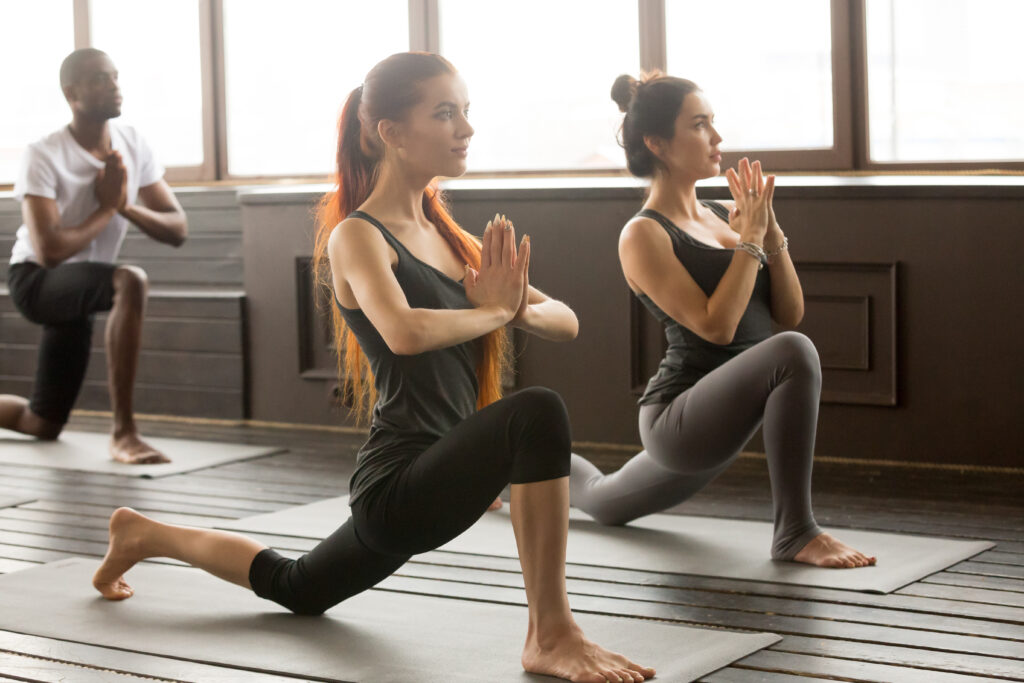# Hatha Yoga vs Vinyasa Which is best for you?
Introduction
Yoga is a practice that integrates mind, body and spirit, providing many health benefits. Among the myriad styles of yoga, Hatha Yoga and Vinyasa Yoga are known for their popularity and distinct approaches. While hatha yoga emphasizes a slow, systematic approach to posture and breathing, vinyasa yoga is dynamic and fluid, connecting breath with movement. This article explores the differences, benefits, and suitability of each style, to help you decide which yoga practice is best for you.
Hatha Yoga
Overview
Hatha yoga is often considered the foundation of all yoga styles. It focuses on physical postures (asanas) and breathing exercises (pranayama) to prepare the body and mind for meditation. Known for its slow pace, hatha yoga allows practitioners to deepen their understanding of each pose.

Origin and History of Hatha Yoga
Hatha yoga dates back to the 11th century, with roots in ancient Indian traditions. It was formalized in texts such as “Hatha Yoga Pradipika” by Swami Swatmaram. This style of yoga was developed to balance the physical and mental aspects of the body, paving the way for spiritual growth.
Principles of Hatha Yoga
Hatha yoga is built on the principles of balance, control and mindfulness. It emphasizes maintaining poses for extended periods while focusing on alignment and breath control. The purpose of this practice is to create harmony between body and mind.
Common Poses in Hatha Yoga
- Sun Salutations (Surya Namaskar)
- Warrior Poses (Virabhadrasana I, II, III)
- Tree Pose (Vrikshasana)
- Triangle Pose (Trikonasana)
- Seated Forward Bend (Paschimottanasana)
Physical Benefits of Hatha Yoga
Hatha Yoga enhances flexibility, builds strength, and improves balance. The deliberate pace helps in gradually increasing physical capabilities without overstressing the body.

Mental and Emotional Benefits of Hatha Yoga
This practice fosters mindfulness, reduces stress, and promotes emotional stability. The combination of breath control and meditation techniques helps calm the mind and enhance mental clarity.
Who Should Practice Hatha Yoga?
Hatha Yoga is ideal for beginners, senior citizens and those seeking a gentle approach to yoga. It is beneficial for individuals who want to reduce stress, improve flexibility and achieve overall well-being.

Common Misconceptions about Hatha Yoga
Many people believe that Hatha Yoga is always slow and easy. While it is accessible to beginners, certain poses and sequences can be quite challenging, offering a good workout.
Vinyasa Yoga
Overview
Vinyasa yoga, also known as “flow yoga”, is characterized by its dynamic and continuous movement. It involves a sequence of postures that are linked together in a natural, flowing manner with the breath.
Origin and History of Vinyasa Yoga
Vinyasa Yoga evolved from Ashtanga Yoga, which was developed by K. in the 20th century. Pattabhi is a system developed by Jois. The term “vinyasa” refers to the alignment of movement and breath, a core tenet of the style.

Principles of Vinyasa Yoga
The principles of Vinyasa Yoga include flow, breath synchronization, and dynamic transitions. This practice emphasizes the fluidity of movement, creating a dance-like sequence of poses.
Common Poses in Vinyasa Yoga
- Sun Salutations (Surya Namaskar)
- Plank Pose (Phalakasana)
- Downward Dog (Adho Mukha Svanasana)
- Cobra Pose (Bhujangasana)
- Warrior II (Virabhadrasana II)
Physical Benefits of Vinyasa Yoga
Vinyasa Yoga improves cardiovascular health, builds endurance, and tones muscles. The continuous movement keeps the heart rate elevated, providing a cardiovascular workout.
Mental and Emotional Benefits of Vinyasa Yoga
This practice enhances focus, reduces stress, and promotes emotional release. The dynamic nature of Vinyasa Yoga helps in releasing built-up tension and fostering a sense of well-being.
Who Should Practice Vinyasa Yoga?
Vinyasa Yoga is suitable for intermediate to advanced practitioners and those looking for a more physically demanding practice. It is ideal for individuals seeking to improve their fitness levels and mental focus.
Common Misconceptions about Vinyasa Yoga
A common misconception is that Vinyasa yoga is only for physically fit and always energetic people. However, there are variations and modifications that can make this style accessible to practitioners of different levels.
Key Differences Between Hatha and Vinyasa
- Pace: Hatha Yoga is slow and methodical, focusing on holding poses, while Vinyasa Yoga is fast-paced, emphasizing the flow between poses.
- Structure: Hatha Yoga involves static postures held for extended periods, whereas Vinyasa Yoga features continuous, flowing sequences.
- Physical Intensity: Vinyasa Yoga is generally more physically demanding, providing a cardiovascular workout, while Hatha Yoga focuses on building strength and flexibility gradually.
Choosing Between Hatha and Vinyasa
Choosing the right yoga style depends on your personal goals, physical condition, and preferences. If you want relaxation and stress relief, Hatha Yoga may be a better option. If you are looking for a dynamic workout that improves fitness levels, Vinyasa yoga may be more suitable.
Integrating Hatha and Vinyasa into Your Practice
Combining Hatha and Vinyasa Yoga can offer a balanced practice. You can enjoy the meditative, calming aspects of Hatha Yoga along with the energetic, cardiovascular benefits of Vinyasa Yoga. Integrating both styles helps in achieving a well-rounded yoga experience.
Get Access Now: https://bit.ly/J_Umma
